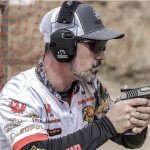SEW has been using the S&P 500 index since 2000 as a baseline to measure performance in the sporting goods industry versus the rest of the public market. All indices in the chart to the right (and tracked each week on the cover of SEW) were set equal to the S&P 500 index March 2000, which was about 1,500 at the time. Since that time, we have seen the S&P both fall sharply and regain momentum over the last two years, gaining 25.2% in 2003 and 9.0% in 2004, but the sporting goods industry continues to outperform the broader market.
Despite the issues in the Golf index and Department Stores as a drag on performance in 2004, the sporting goods industry found plenty of bright spots and strong performers to help the total Industry index best the S&P 500 index by more than a 3:1 margin.
Leading the charge was the Hardlines companies, which shook off the implosion of Huffy Corp.(-97.5%), Escalade (-21.2%), and Callaway (-19.9%) to post a 33.1% increase in market cap value for the year. Aldila, which was on the Top 10 Gainer list in 2003 with a 124% increase, led all companies in 2004 with a 328% increase in share price. Cybex was the other big contributor here, posting a 235% increase in share price in 2004 after a 10% decline in 2003. Nautilus (+72.0%), Brunswick (+55.5%), Head NV (47.2%), and Johnson Outdoors (+34.6%) rounded out the winners circle in Hardlines in 2004.
In addition to Aldila, the list of Top 10 Gainers for 2004 included a few other familiar names with Deckers, which topped the list in 2003 with a whopping 520% increase in share value, posting a 129% increase in 2004, and GSI Commerce, again making the list with a 82.4% increase on the back of a very healthy e-commerce season for Holiday 2004. A few companies moved to the Gainers list in 2004 from the Top Decliners list in 2003. Everlast saw its fortunes turn around in late 2004 as the market responded favorably to the companys long-anticipated move to license its womens apparel business. Skechers also moved to the upside in 2004 after a rough 2003 on some indication that they finally had their inventory situation under control.
On the Top 10 Decliners list, Huffy found new ways to frustrate investors as they filed Chapter 11 and started selling off everything they saw as a drag on the business, leaving them with their core bicycle and golf business and a market cap of just $2.08 million at year-end. The Sports Authority failed to live up to the hype of the merger between TSA and Gart Sports in 2003, as TSA shares settled back on investors wait n see attitude for the coming year. The declines in the market caps at Shoe Carnival and Brown Shoe mirrored the difficulties that the family footwear sector saw in 2004, as both retailers turned increasingly to athletic footwear for positive results as the boot business lagged in the sector in 2004.
G-III Apparel made the decision to exit the fashion sports apparel business in 2004 as sharp declines in sports licensed apparel sales more than offset decent gains in their licensed outerwear business. Callaways decline was clearly a result of management taking its eye off the ball (or club), as the market shifted to bigger and badder, leaving their Big Bertha product looking more like a Mid-Size Madge.
From a size standpoint, the year saw Nike break the $24 billion mark in market cap in December, but settle back a bit to $23.95 billion at year-end, a one-third increase over calendar year-end 2003. adidas-Salomon was a distant second place with a market cap at a healthy $8.1 billion (measured in U.S. dollars at 12/31/2004). In Euro terms, adidas-Salomon market cap jumped 45.2% to 5.97 billion. Puma AG distanced itself from Reebok and the rest of the pack they surpassed in 2003, posting a 49.3% market cap increase to 3.36 billion, or $4.6 billion in U.S. dollars at year-end. Reebok held on to the number four spot with a $2.56 billion market cap, as shares lagged the sectors gains, rising 11.9% for the year. Columbia stayed in the Top 5 in the Apparel/Footwear sector with a market cap of $2.38 billion, or an increase of just 9.1% for the year. If VF Corp., which is building a much larger position in the athletic and outdoor apparel/footwear business, was figured into the mix, they would take the number three spot with a $6.15 billion market cap at year-end.
Both Wolverine ($1.20 bn) and K-Swiss ($1.00 bn) broke the billion dollar threshold in 2004.
In Specialty Retail, Foot Locker, Inc. still easily dominates the landscape with its $4.2 billion market cap at year-end, but Dicks Sporting Goods now moves into the second spot with a market cap of $1.69 billion. Pacific Sunwear slips to number three as its market cap stayed roughly flat at $1.65 billion and Cabelas entered the public market in 2004, pushing TSA out of the number four spot, and ending 2004 with a market cap of $1.47 billion. Finish Line rounds out the Top 5.
The Sports Authority ($665 mm) fell four spots to number eight at year-end, as it fell (or was passed) by The Finish Line ($831 mm), GSI Commerce ($732 mm), and Genesco ($694 mm). TSA will have to put in a healthy year in 2005 to keep Big 5 ($661 mm), The Buckle ($638 mm), and Hibbett ($625 mm) from passing it this year.
>>> So much for a mature industry with little upside for growth. This feels a lot more like high tech than low performance. The trick will be turning in another year of strong performances as the bigger deals dry up…













